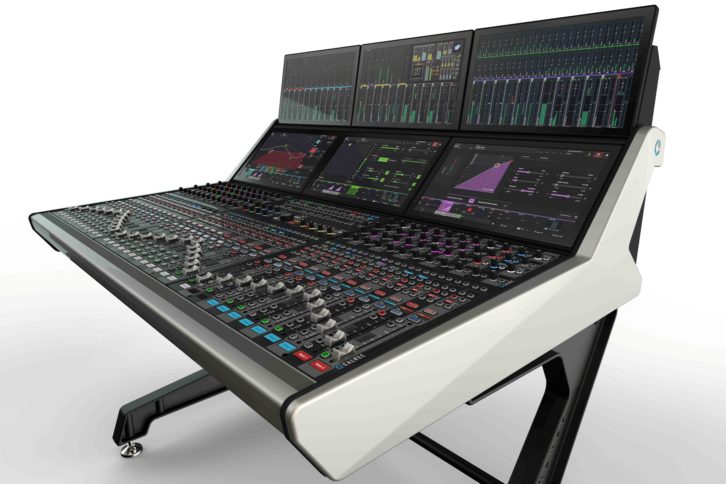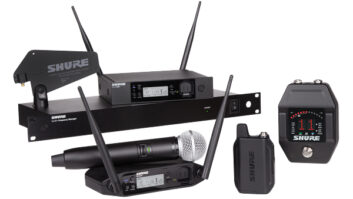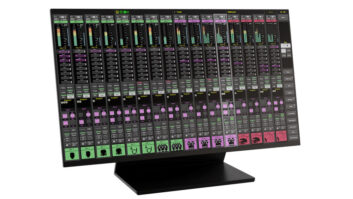(Hebden Bridge, UK)—Calrec Audio has unveiled Argo, a new modular audio mixing system that breaks the traditional geographic tielines between processing and control, at IBC2022 in Amsterdam.
Argo is fully modular with interchangeable hardware panels and uses Calrec’s time-served Assist UI at its core, offering familiarity whether working on physical hardware panels or on a remote GUI. Its modular panel system encourages broadcasters to adapt surface hardware to meet their unique requirements, with two mid-level rows of interchangeable panels on the larger Argo Q model, and one mid-level row on the compact Argo S model. Calrec has also introduced a comprehensive system of user templates to instantly change the hardware user interface to meet changing requirements or user preferences.
Argo is built around an expanded version of Calrec’s popular ImPulse IP core. ImPulse can also be located anywhere; the location of the control surface is not tied to the processing core. It can power up to four independent mix environments, including headless mixers accessed on the public Internet, with each mixer able to access more than 2,350 processing paths on a single console; this provides enough power to deal with the biggest immersive and Next-Gen Audio mixing demands.
“Broadcasters are under greater pressure to create more content cost-effectively, as they are all competing for the same viewers in an increasingly congested market,” says Dave Letson, Calrec VP of sales. “At the same time, production workflows have to be more flexible to be more efficient, cover more content and work as part of distributed production models. Broadcasters’ move to IP-based networks is encouraging more remote working in more fragmented workflows; we’ve designed Argo to work within each and every one of these new paradigms.
“As broadcast infrastructures migrate to new environments, broadcast consoles need to work in different ways to ensure that they remain a safe investment,” he continues. “On Argo, Calrec’s Assist GUI is central to the operation of the console and is directly transferable onto a browser to provide portability, backup and on-the-fly configuration in remote locations.”
Argo’s physical control surface is also more streamlined, using optically bonded touchscreens for visual feedback and speed of access. Soft panels provide a richer user experience, and hardware panels allow users to build definable functions and apply these as templates.
Argo’s panels are also interchangeable and can be placed wherever they are needed. This makes it easy to grow and adapt the console to individual requirements, and it means the desk can easily be split for submixing or mixing in other locations.
All control elements can be duplicated, so an operator can use any panel to access inputs and controls, while fader-scrolling functionality adds more protection. When combined with redundant hardware as standard, Argo provides SMPTE’s hitless packet merging alongside a second layer of hardware redundancy to guarantee broadcast uptime.
Argo includes optional AoIP I/O modules, which can be fitted directly into the control surface; these can be fitted into every section of the console to give the operator a variety of input options, make cabling more efficient and save space in external racking.








